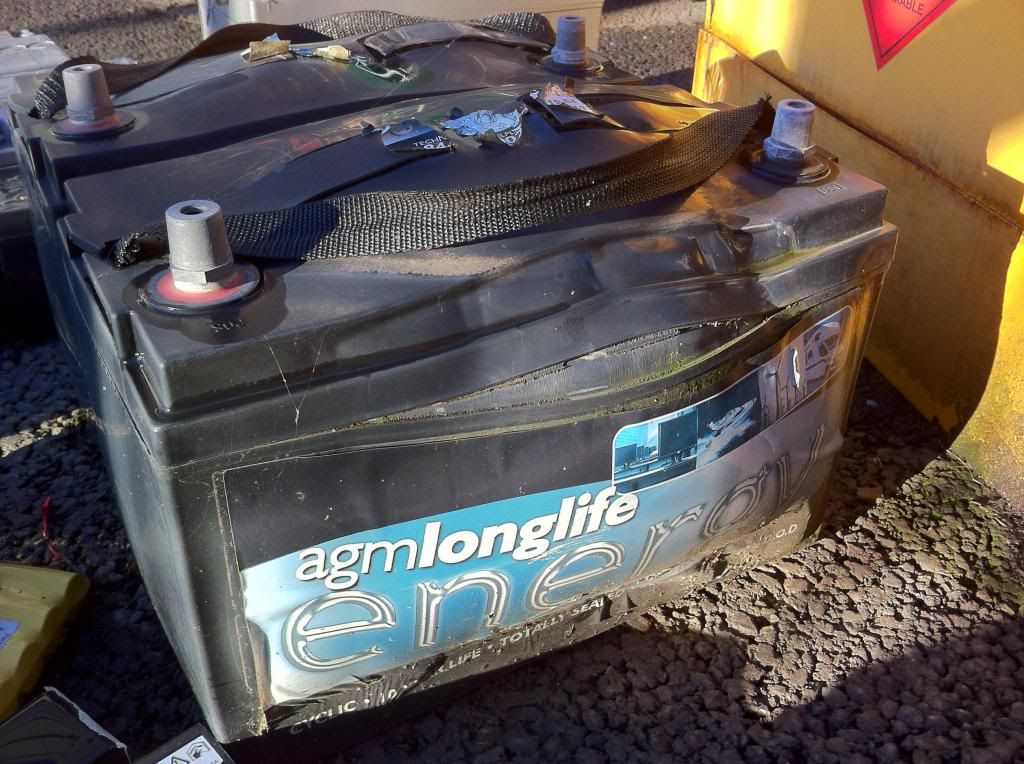I'm after advice on how to wire in a second leisure battery. I thought my starter battery was on its way out so I bought a new one, but it turned out I had a fault in my electrics that was draining it, and in fact my starter battery is fine - still holding over 13.1V nearly 12 hours after charging it. So now I've got three good batteries, and I want to think about making use of all of them.
My existing leisure battery is an 80AH leisure battery from Alpha - I bought it in July this year. It's wired via a Smartcom relay to get a charge from the alternator, and via a ZIG CF8 to get a charge from a mains hook up. All the load wires are connected through an LVD (the 16A one that Ghost recommended), and I leave the ZIG switches set so that the starter and leisure batteries are disconnected from each other at all times.
I'm wondering what's the best way to wire my spare battery into the circuit. If I just add it in parallel to the existing leisure battery, there are a few problems that I can see:
1) The current through the Smartcom is more likely to exceed its limit. However, one nice thing about the smartcom is it doesn't switch in until the voltage rises to a given level, so this circuit never sees the high currents experienced during starting.
2) The LVD will only see the combined battery bank, and won't know the state of charge of the individual batteries. Potentially one battery could drop below the ideal cut-off voltage, even though the bank is above the LVD cut-off point.
3) Mains charging through the ZIG will be in parallel (as would the alternator charging in fact). It's a 10A charger, which I know isn't particularly high, but I'm very nervous of charging batteries in parallel, due to the potential for them to be at different states of charge. If one battery is 'full' and the other isn't, then an intelligent or phased charger might continue to charge at a higher current than the full one needs. I have first-hand experience of this in another vehicle!

This seems all the more likely because the batteries aren't matched - one is an 80AH leisure battery and the other would be a 72AH starter battery.
4) I don't know how the parallel bank will distribute its power - will one battery drain faster than the other, due to their different characteristics?
So what I'm wondering is whether there's a more sophisticated way to do this. I can solve the Smartcom current issue by using its fridge output to trigger a separate dumb relay. But parallel 'dumb' charging and low voltage protection would still be a concern. I'm also hoping to fit a 100W flexible solar panel at some point. So I'm wondering if a dual, or even triple, charge controller will solve all my problems. Does a charge controller monitor each battery separately so that the charge for each battery is administered intelligently, and so that the load is balanced between them? Can I use a charge controller to manage all three sources of charge (alternator, ZIG, solar) across all three batteries?

